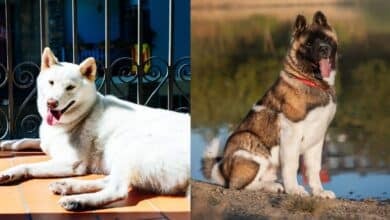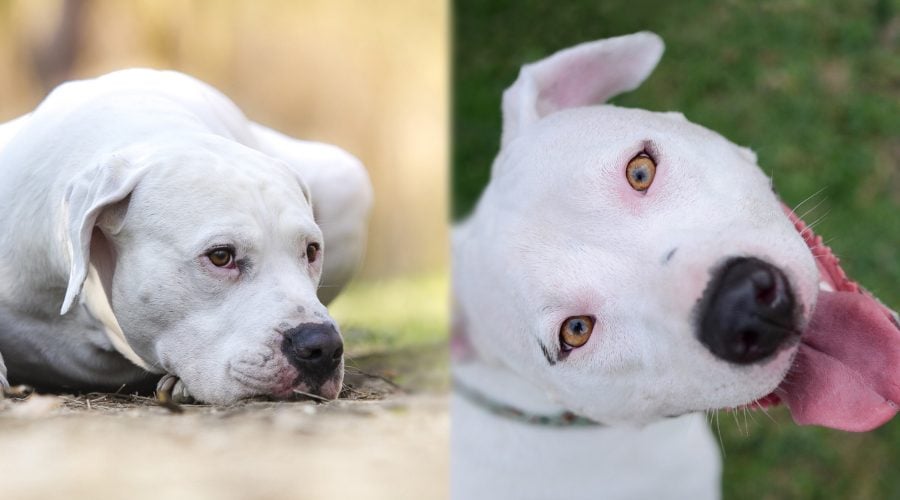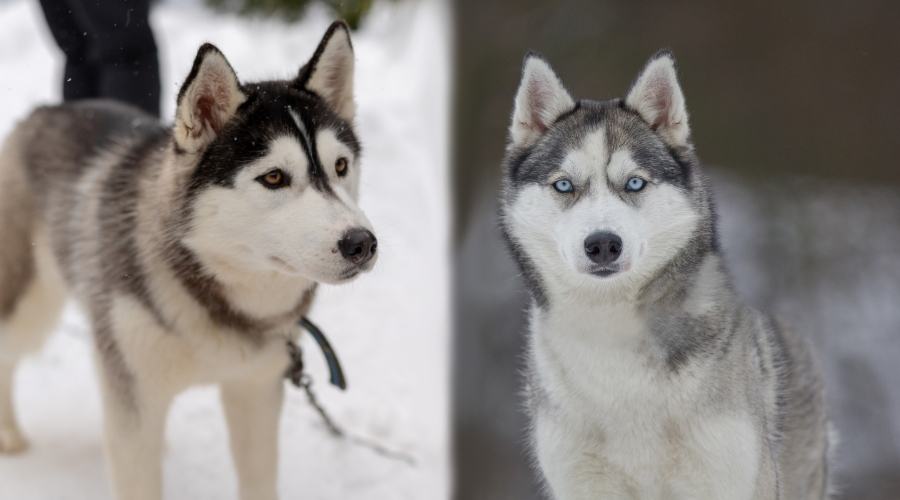Presa Canario vs. Cane Corso: Breed Differences & Similarities
When you purchase through links on our site, we may earn a commission. Here’s how it works.
The Presa Canario and the Cane Corso are big, dreamy pups. However, due to their size, power, and their origins, they have a bad reputation. They both come from the Molosser line and share traits with other bully breeds. Many people are interested in the differences between the Presa Canario vs. Cane Corso.
Table of Contents
While these dogs are similar, they have some notable differences. Both are loving of their immediate family and will show affection and loyalty. The Cane Corso will act as his master’s bodyguard, and unless you signal that it is ok, he will not allow strangers near you. The Presa is less intense, but he will still protect and alert you to immediate danger.
They are both generally quite healthy and require intense socialization and obedience training. The Presa is more so, for if you let his training slide, he can become obnoxious, and he will try to rule the roost.
If you are not certain of your dog’s genetic makeup, you can use an at-home DNA test kit to find out.
Breed Comparison
- Height22-26 Inches
- Height23-27 Inches
- Weight80-130 Pounds
- Weight88-110 Pounds
- TemperamentConfident, Calm, Strong Willed
- TemperamentAffectionate, Intelligent, Majestic
- EnergyAverage
- EnergyAverage
- HealthAbove Average
- HealthAbove Average
- Lifespan9-11 Years
- Lifespan9-12 Years
- Price$1,500 and Up
- Price$1,500 and Up
Key Differences
- Presa Canarios are heavier, weighing about 140 pounds.
- Cane Corsos are taller but weigh less, around 130 pounds.
- Presa Canarios have a distinct black mask around their eyes and black markings around their lips, and noses.
- Cane Corsos are slightly less expensive.
- The Presa Canario has a higher prey drive.
- Cane Corsos are more social dogs than Presas and are gentle around children.
- Presa Canarios are more stubborn and less friendly to people, including children.
- Cane Corsos have a denser coat.
- Presa Canarios require more exercise and have more energy.
- Cane Corsos tend to be more aggressive towards dogs of the same sex.
Breed History
Differing from other variations of mastiffs, these Mediterranean Mastiffs could easily pass as brothers, and while they were born in different parts of sunny Europe, their journeys are uncannily mirrored.
Presa Canario
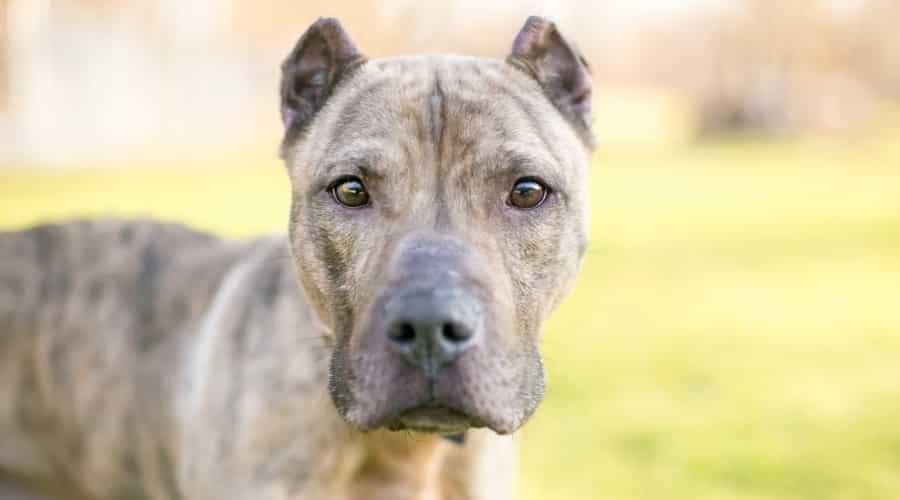
The Presa Canario’s journey began in the Canary Islands, where he was used as a guard dog for herding cattle and exterminating wild dogs that threatened his flock.
The Presa Canario almost became extinct in the 1940s due to dogfighting and the introduction of other guarding dogs to the island, such as the Dobermann and the German Shepherd. However, fanciers of the breed pulled together and, in the 1970s, began an intense breeding program. They have recovered in numbers but are still working towards achieving a recognized status by the big kennel clubs.
Cane Corso
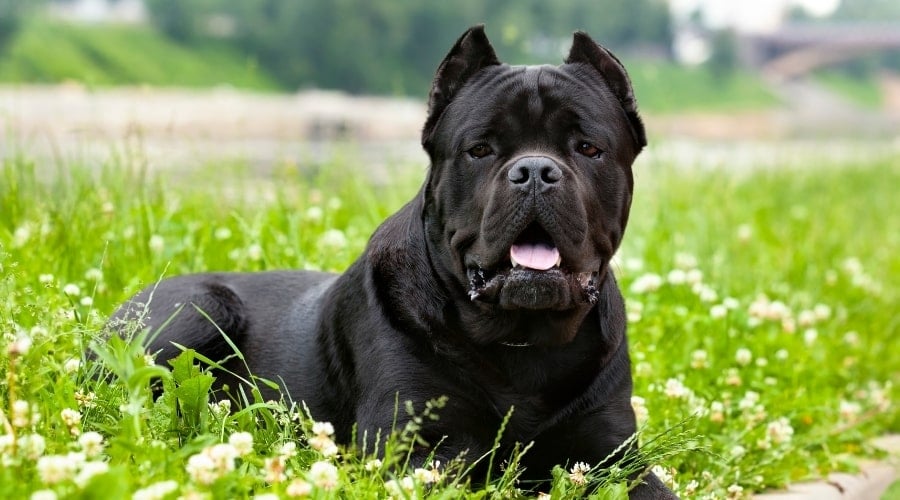
The Cane Corso’s journey began in Italy, and it is believed that his forefathers were of Roman descent. The original Cane Corsos were used in war to charge enemy lines, armed with flaming oil buckets strapped to their back; they were much larger than the dog we know today. When the Roman conquests and wars finished, his job roles included flock guardian, estate guardian, farmhand, hunting dog, and loving family companion.
This guy is a jack of all trades and a master of them all. During the World Wars, he almost became extinct, but thanks to an Italian Doctor in the 1970s, an intense breeding program saved these pups.
Today they are popular family dogs and are currently ranked the 32nd most popular dog in America by the American Kennel Club. The Cane Corso is often confused with the South African mastiff, or Boerboel, and the American Pitbull Terrier.
Appearance
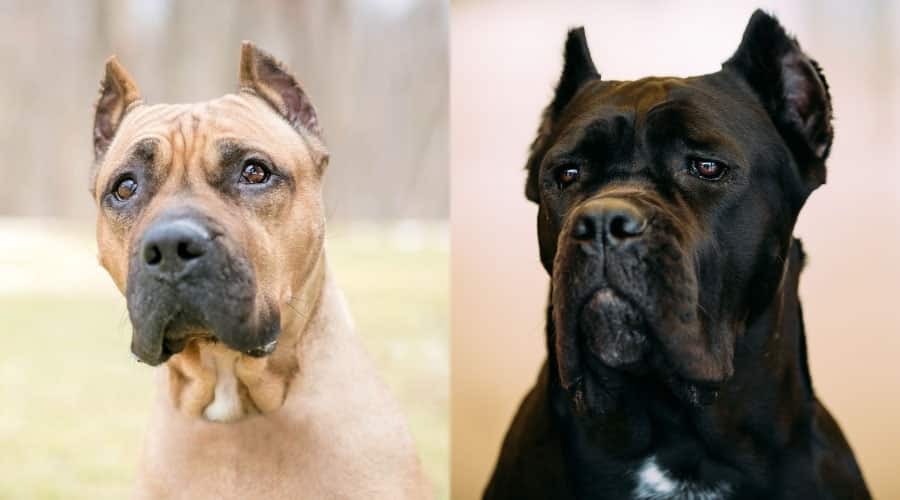
The Presa Canario and the Cane Corso are both bred from Mastiff-type dogs and as such, these guys are quite similar in appearance.
Sizewise, the Presa Canario is shorter, on average, by an inch compared to the Cane Corso. The Presa stands between 24 and 26 inches, whereas the Cane Corso stands ever so slightly taller, between 24 and 27 inches.
What the Presa might have lost in height, he certainly makes up for in weight; the Presa weighs between 110 and 130 pounds, whereas the Cane Corso weighs much less at 99 to 110 pounds. Many people mistake the Cane Corso for an English Mastiff, mostly due to their coloring and head shape.
The Presa is stockier looking, thanks to his extra muscle weight, but they look equally as impressive. The Presa comes in six colors, whereas the Cane Corso comes in seven, all of which are different except the fawn color that they share.
Despite the variety of colors, the Presa always has a black mask that does not go above his eyes, and his nose, lips, and eye rims are also always black. They both have short straight hair; however, the Cane Corso has slightly denser fur, which is rougher to the touch.
The Presa and the Cane Corso both tend to have their ears cropped to keep with their traditional look that ensured they were not injured while hunting wild boar or fighting stray dogs. Their ears are both large and drop down alongside their cheeks if left in their natural state.
Temperament
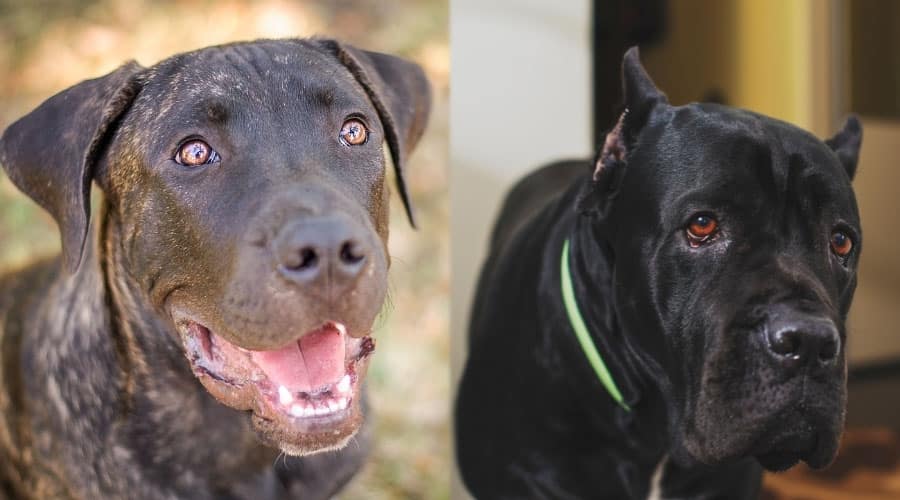
The Presa Canario and the Cane Corso are equally similar and different regarding their temperament. They are both intelligent dogs who are very loyal and eager to please their master. Both pups are confident characters who need a strong pack leader.
They are both protective working dogs, and as such, they will naturally take on the role of family protector. The Cane Corso’s name derives from the Latin word “Cohors,” which translates to “guardian,” and this is the perfect description of what this guy is. He is particularly suspicious of strangers, so unless his master addresses them directly, he is unlikely to let strangers near his master.
That said, he is more sociable than the Presa Canario and very affectionate with his family and those his masters welcome into the pack. The Presa Canario is affectionate with his immediate family but is more aloof with outsiders and strangers.
What is different is that the Presa Canario is less suited to families with younger children or other household pets as he has a higher prey drive. If you bring him into a family as a puppy where there is already a child, then he should be ok as he will be socialized with them. However, it is not advisable to bring him into a home as an adult with small children present.
The Cane Corso is tolerant and gentle with children and makes for a great family pet. With that being said, because of his size, young children should always be supervised to prevent mishaps.
Exercise
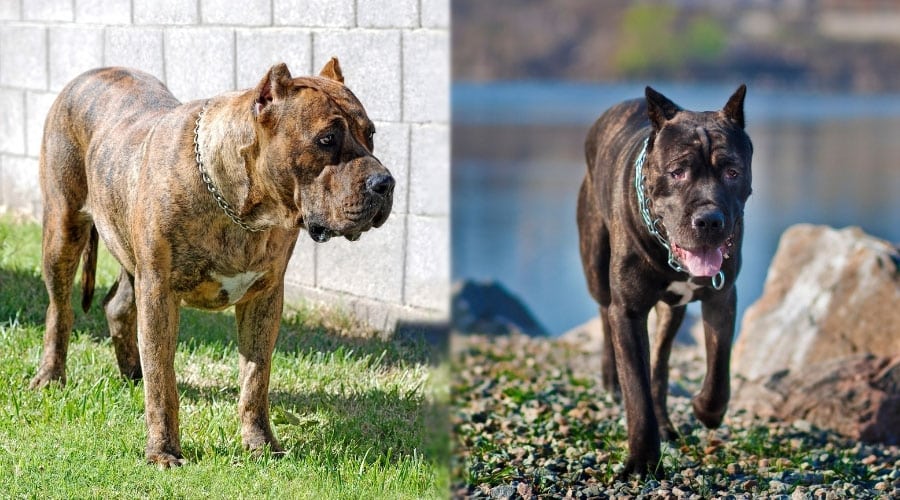
Both the Presa Canario and the Cane Corso are described as medium-energy dogs, and they both require 60 minutes of exercise a day.
The Cane Corso does require more intense exercise than the Presa Canario, and interactive games such as fetching frisbee, tug-of-war, and dog agility courses will provide this pooch with the physical and mental stimulation that he needs.
They both make great jogging partners. Just ensure you only take them jogging once they are fully grown and their bones are developed.
Because of their sheer size and power, these guys need to be entertained, otherwise, they can become bored and destructive, and that path will be comparable to that of a hurricane. They will likely swallow a treat-toy whole, so it is best if you are at home for the majority of the time to keep them entertained with interactive exercise or long walks.
As both of these guys often find themselves on the dangerous dog breeds list, be sure to check out your local dog laws, as you may be required to leash and muzzle them when walking or exercising them in public areas.
Training
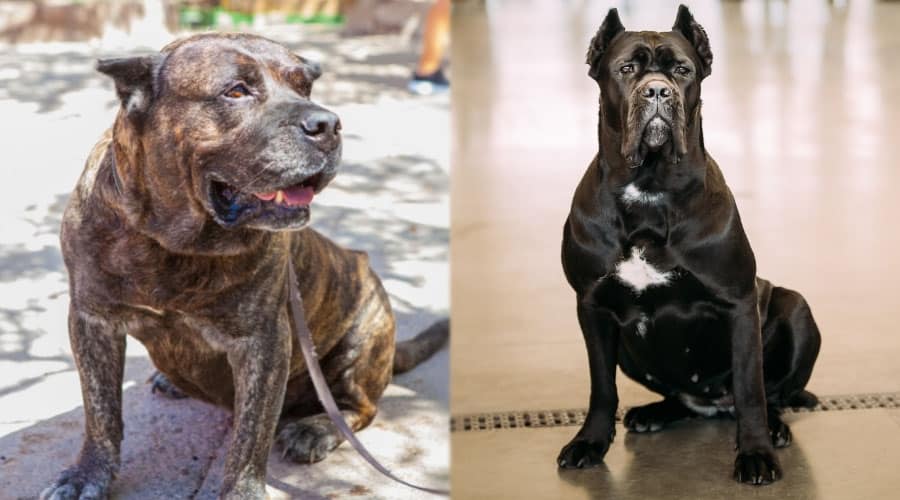
Both the Presa Canario and the Cane Corso are intelligent and confident breeds. Because of this, they both require a dominant pack leader who will always keep them in line. If either of them feels they can take advantage of you, they undoubtedly will and eagerly assume the pack leader position. Do not let this happen if you want to maintain your happy household!
Early socialization is key for both of these guys; they must learn how to be well-mannered pups with all humans and animals alike and to be comfortable and calm in a variety of situations. If you can master this from an early age, you will secure a happier and smoother future. Both breeds respond well to positive reinforcement training.
Obedience training is also important. Instilling discipline in your household is essential. Never give anything to either of these breeds for free, and ensure that they sit or give a paw before any treat or meal. It is important to ensure that every family member is familiar with the rules and is always consistent.
This is slightly more important for the Presa Canario, as he is much more stubborn than the Cane Corso. Never allow him into a position of leadership as he can become uncontrollable and, on occasion, aggressive. For example, never play tug-of-war with this dude because here you are giving him the opportunity to win, and he may not see this as a game but rather a play for the pack leader position. Training will be ongoing throughout his whole lifetime, so he is more demanding than the Cane Corso.
Health
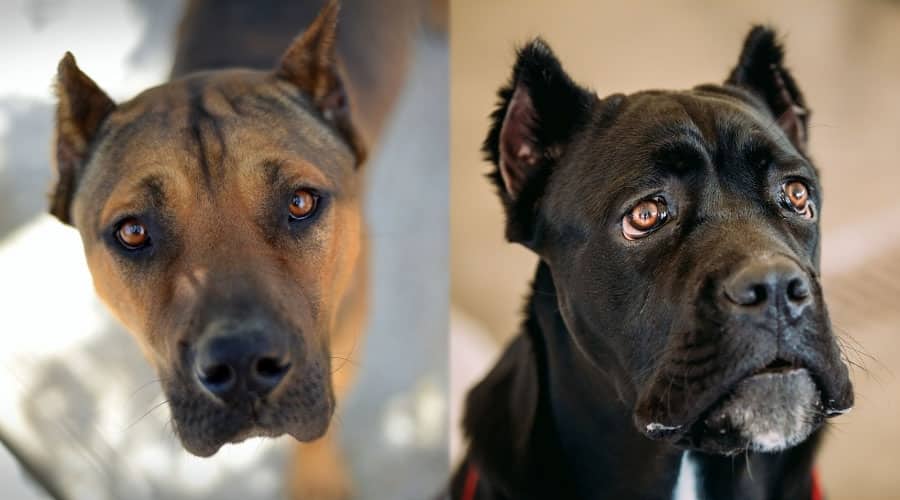
Both the Presa Canario and the Cane Corso are generally healthy dogs and are known to suffer from fewer major health issues compared to the average pooch.
As both breeds are large dogs, they are known to suffer from elbow and hip dysplasia. This is an abnormal formation of the joints, which can cause mobility issues and crippling arthritis.
They are also both susceptible to gastric torsion, also called bloat. This is experienced when the dog eats a large meal either immediately before or after exercise, and then the stomach twists. Large breeds can develop this when they eat or drink too quickly. Symptoms include excessive panting, retching without vomiting, and other distress signals. Be sure to take him to the veterinarian immediately, as this can be life-threatening.
Further to the joint dysplasia issues, Osteochondritis dissecans and Panosteitis are commonly found in Presa Canarios more so than Cani Corsi as they are slightly shorter and weigh much more, and this puts extra pressure on their rapidly growing bodies and joints. Panosteitis is sometimes referred to as growing pains, and they generally stop once the dog is fully grown.
The Cane Corso must also be examined for cardiac health problems, such as dilated cardiomyopathy. This is characterized by thin walls which make the heart weak.
Could Pet Insurance Help?
If your pet insurance covers exam fees and your dog needs to be examined, there is a good chance your policy will reimburse those costs based on your policy details. However, if you are a new customer, vet expenses will not be covered until after your policy’s defined waiting periods, so signing up once you have an existing health concern is not going to help this time. Pre-existing conditions are not covered by any current pet insurance plans.
This is why it is a great idea to sign up for a pet insurance policy when your pet is young and relatively healthy to ensure you will be covered when you need it most.
Nutrition
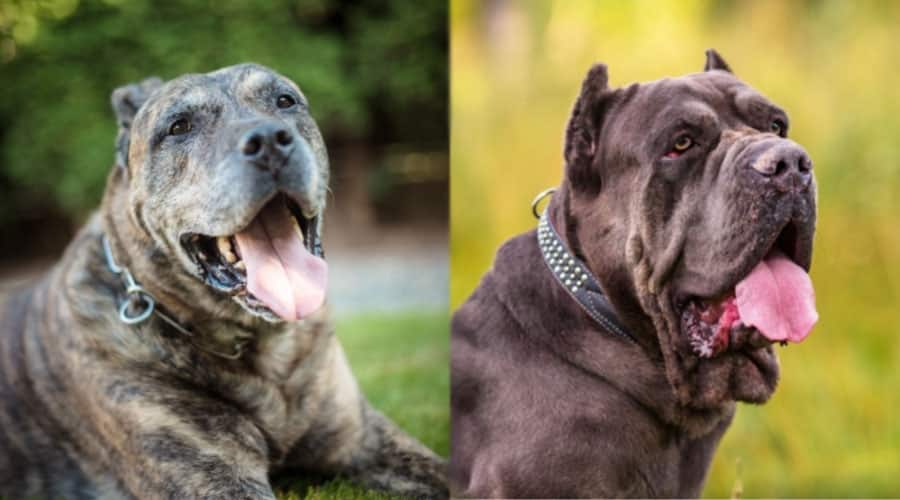
The Presa Canario and the Cane Corso consume the same amount of food a day. On average, this is 3 cups of food. High-quality food is important to ensure that their health is optimized as much as possible. High-quality kibble specially formulated for their massive size is recommended from puppyhood and into adulthood.
Both breeds have a particular liking for snacks, so it is important to keep an eye on their treat intake. Treats are a great tool for training, but be sure not to give them too many. Not only will this make them obese, but it will further impact their already weight-laden joints.
Grooming
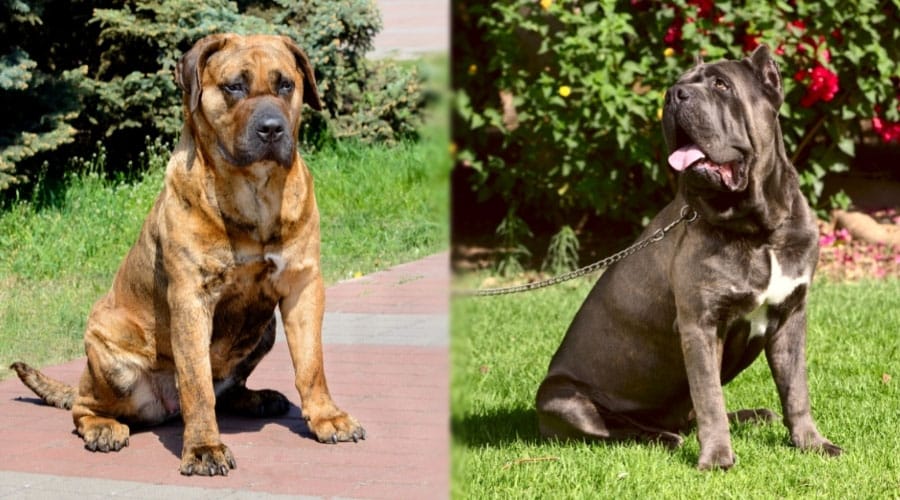
Generally, the Presa Canario and the Cane Corso are easy breeds to groom and look after. They are light shedders and require little bathing due to their short coats. A bath every two months will suit them both as they don’t have a strong canine odor. If you do bathe them more than this, you run the risk of damaging their natural coat oils, and this can cause skin irritation.
Unlike the Cane Corso, the Presa Canario does not have an undercoat; however, they both shed lightly throughout the year, but more so in springtime. Generally, a brush 2 to 3 times a week will keep them looking healthy, remove dead hair and promote hair growth. During shedding season, brushing them every day is a good idea to minimize the amount of hair on your sofa.
Both are prime suspects for drooling, particularly the Cane Corso, so if there is a chance you can’t tolerate slobber marks on your outfit, then you should consider another pup.
Puppy Price
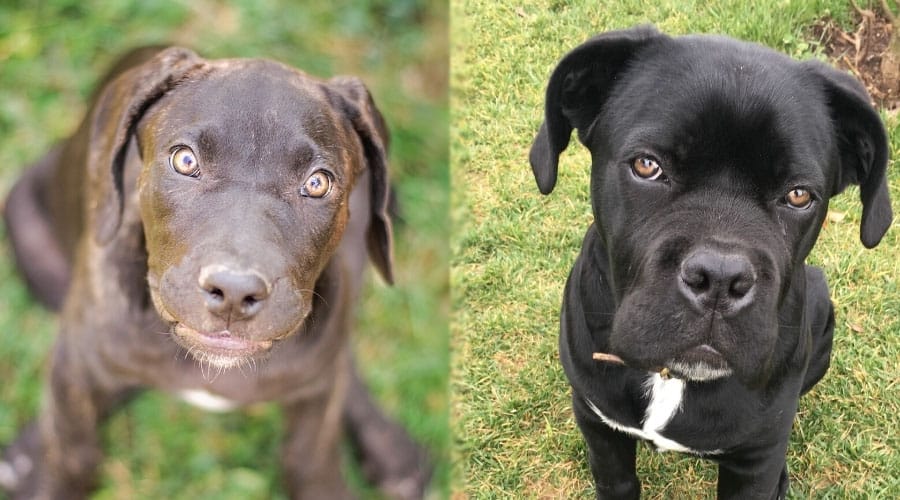
The Presa Canario puppy from a reputable breeder will cost, on average, between $1,500 and $2,000. This is slightly more expensive on average than the Cane Corso, which is priced anywhere between $1,500 and $1,800. They are more expensive because there are fewer breeders, and therefore there is a higher demand for them.
If you require a working specimen of either breed, you can expect to pay more than the average cost. They will have been raised and trained differently from general puppies, and it is likely they will have been bred from a particular bloodline.
It is important to buy from a reputable breeder as the first few weeks will be crucial to the pup’s temperament, and with these strong-willed guys, getting a puppy that has had the best possible start to life is important.
Final Thoughts
Overall, the Presa Canario and the Cane Corso are very similar in appearance and temperament, with a few slight differences, such as their weight and price.
They are both protective and sociable. If you are after a family pet, then the Cane Corso will be more suited, whereas if you are after an estate protector, then the Presa is more independent and capable of this role.
Neither breed is for the novice dog owner as they require intense training and a firm master. However, if you think you’re up to the challenge, it will be a very rewarding relationship.
